UPDATE: This alternative design was not endorsed by Council. Here’s the endorsed design.
City of Hobart will soon begin trialling changes to the three blocks of Collins Street between Molle and Murray Streets. Currently the changes will be as per the currently endorsed design. However some small business and property owners don’t like this design, and the council voted in November to explore options “to retain loading zone and parking opportunities” in the section between Victoria and Murray Streets. Here we look at the “sharrows design” recommended in the resulting council officer report.
The “sharrows design”
The newly recommended design between Victoria and Murray Streets proposes:
- Sharrows painted in the two traffic lanes (one in each direction) used by people both riding and driving.
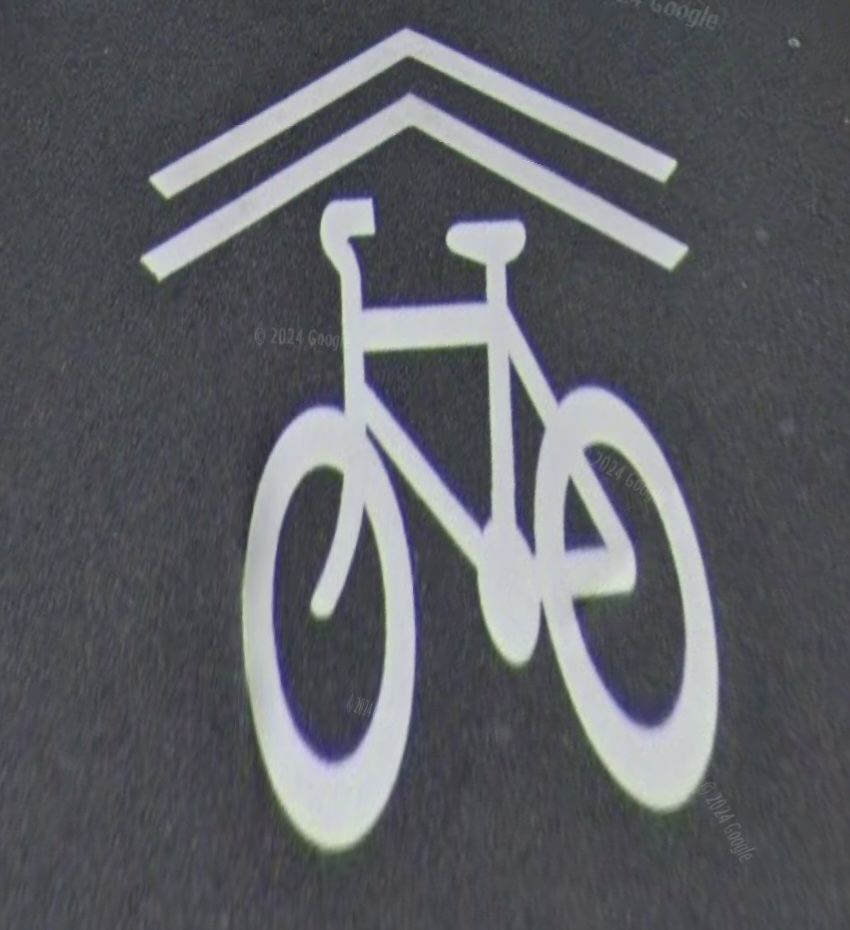
- Speed limit reduced to 30 km/h from 40 km/h (as in the already endorsed design).
- Combining straight ahead & right turn traffic lanes approaching Murray Street into one lane. This allows space for…
- Approximately 30 m of protected bike lane approaching Murray Street.
- Retention of all parking bays and loading zones.
- No changes to the bus stop.
- As in the endorsed design, Victoria Street is reduced from two to one lanes exiting onto Collins Street resulting in a shorter distance for pedestrians to cross.
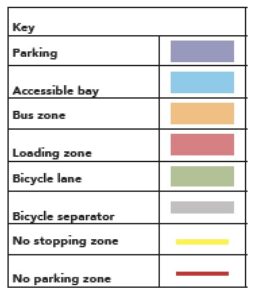

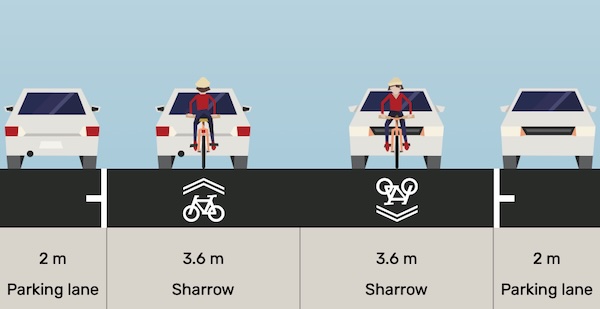
Our thoughts
The good
- 30 km/h is a much safer speed than 40 km/h. About 3 in 10 people walking and hit by a car at 40 km/h will die. At 30 km/h this reduces to 1 in 10 dying.
- The short section of bike lane approaching Murray Street will allow people riding bikes to access the intersection more easily. They can then cross the intersection during the scramble phase to continue ahead of general traffic.
- Shortening the crossing across Victoria Street will make people safer when they’re walking. This could evolve into a continuous footpath following the trial.
The less good
- A shared zone with sharrows on a street like Collins Street isn’t AAA (all ages and abilities) standard bike infrastructure, which is what Collins Street is supposed to have as specified in the Greater Hobart Cycling Plan. In fact, evidence shows sharrows are more dangerous than no infrastructure at all. Shared zones are only appropriate in low-speed low-volume neighbourhood streets, in which case sharrows probably aren’t even required.

- Putting up 30 km/h signs doesn’t automatically make people drive slower. The design of the street is key in determining speed and it’s not clear there’ll be enough changes made to the streetscape to prompt people to actually drive slower. For example, lane widths of 3.6 m are excessive in this context and will encourage higher speeds. For this reason NACTO recommends 3 metres (10 feet) in urban areas instead of 3.6 metres (12 feet).
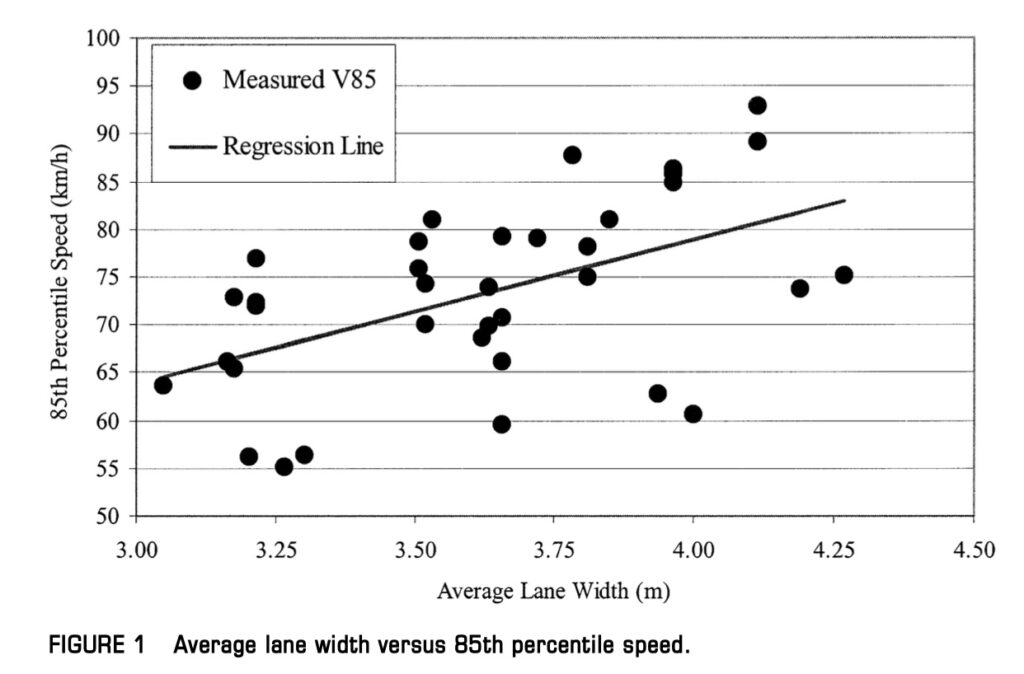
- While a reduction in traffic volume would improve the safety of the shared lanes there’s little in the design that is likely to discourage through traffic along Collins Street, aside perhaps from the removal of the dedicated turn lane approaching Murray Street.
- The entire justification underlying the development of the sharrows design is to retain on street parking, despite external analysis of the original design by consulting firm WSP indicating “the removal of parking bays will not have significant impacts on parking availability in the immediate vicinity of the project“. From the sharrows design recommendation, “some businesses and property owners (but not all) believe loading zones and parking spaces adjacent to businesses are essential for their operation“. This belief is also not supported by evidence — just look at all the businesses in the Elizabeth Street mall, the Centrepoint Shopping Centre and Cat & Fiddle Arcade.
- Under the road rules, e-scooters can’t be ridden on the road along Collins Street since it has a central dividing line. Without bikes lanes, they will need to continue to be ridden on the footpath.
- People will still stand on the footpath with their luggage waiting for the SkyBus. Thanks for visiting the modern city of Hobart.
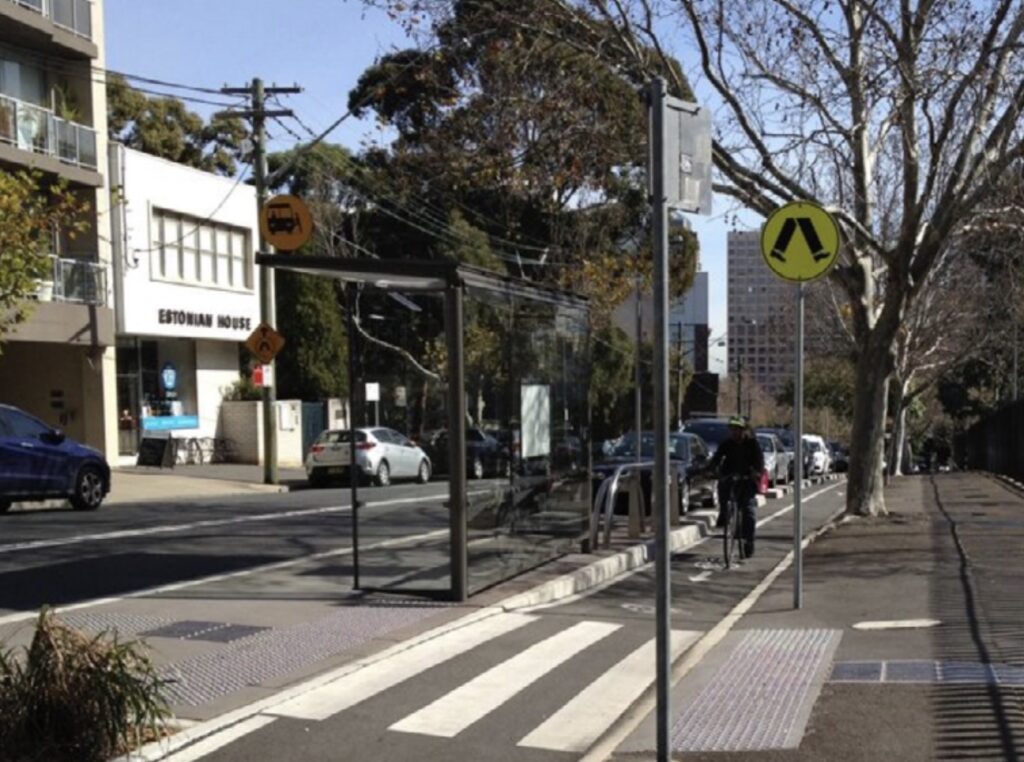
- Such underdone changes may make the trial results difficult to interpret. For example, if more people aren’t riding their bikes, is it because there’s no demand or because the changes weren’t enough to make people feel safe riding?
Where’s it at?
The sharrows design was NOT endorsed by council at the meeting on 31 March 2025.
More info
The recommendation for the sharrows design — agenda of the Hobart Workshop Committee Meeting 17 March 2025 — City of Hobart
Endorsed design for Collins Street
Like building a road to nowhere and hoping it’ll get used!
Thanks for your review 🙂